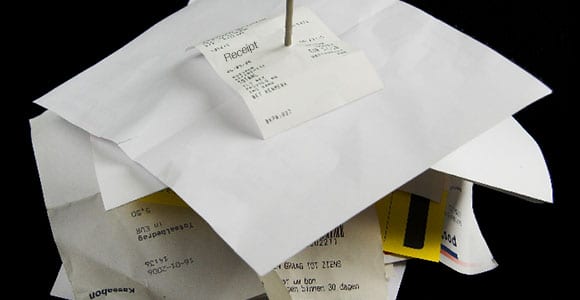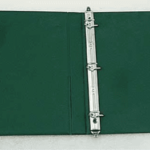
40″x30″
This message is for “art-makers”.
In our world today, no justification is needed for cultural activities, performances, museums, books, the enjoyment of children’s imaginative play, or the process of the creative act. And for those who “make art”, there are a variety of reasons to create. For some, art-making is a past-time, and for others a hobby. Still others consider it to be a vocation. At any level, it may be developed, refined and appreciated.
“All great art is but a vision of creation”. Manfred Khyber
But what is Art for, and where does it come from? We have just experienced a season of gift-giving, and are moving toward goal-setting for the new year. As artists, how exactly will art fit in to our own lives and plans?
This message, too, is for”art-makers”: your Art is a gift. That’s with a capital “A”, because I know your art is important to you, just as mine is to me. But it’s not precisely your art, or my art: the capacity and ability to create art is not an innate skill. It’s a gift, as Edward Yang puts it, for stimulating and “inspiring human flourishing”. It’s a gift that keeps on giving, as long as we keep practicing and giving it. It is a gift we may give to ourselves, to others, to the future, and to our Creator, who made us and gave the gift to us.

14″x18″
Art-making is a gift to ourselves
Making art reinforces and feeds our naturally-curious and creative nature. Through it, artists liberate the imagination, which itself is a gift: we can go wherever we want, any time we want. We enjoy the mixing and mashing of materials to make something new, something that has never been made before. We find fulfillment and freedom through art-making, as our skills and knowledge grow, along with our personality and level of accomplishment.
͞”The greatest good one can do for another is not just to share one’s riches, but to reveal to him his own”. Benjamin Disraeli
Art-making is a gift to others
Our art can provide a lens through which others might see the truth. That’s the usefulness of both metaphors and poetic license. Art is a window to reality, and we know that reality is not just visual. Poet and author Antoine de Saint-Exupery believed that “What is essential is invisible to the eye”. Another philosopher, Aristotle, also believed: “The aim of art is to represent not the outward appearance of things, but their inward significance”. Art can better equip people to deal with their trials, issues, and challenges: have you ever seen a movie, or heard a piece of music, that made you feel differently about something; maybe, so differently that you wanted to change your life after having seen or heard it? Artworks can point the way to hope, grace, and love in a world full of tragedy, suffering and death: that’s the power of art and the artist. “Art should not duplicate real life as it is—Art can and should reveal the artist’s vision of life as it could be”, opines Jennifer King, a contemporary artist. As Leland Ryken writes, “In art we find the materials of life simplified, rearranged, and heightened”. The artist can shine light into the lives of those who are struggling to find a way out—or a way in.
“Artists create things which last beyond death—they are offering something to future generations”. Rollo May

16″x20″
Art-making is a gift to the future
People long to see beauty in the world. Wars slash across the globe like lightning storms, populations everywhere are decimated by drought, hunger and privation, floods claim homes and cities, fires ravage forests and in some places, only ruins tell the tale of what was once a bright architectural vision. In the midst of it all, writes aesthetics philosopher Rollo May, artists “hold up͞that aspect of beauty that transcends death…such as eternity, serenity, and the use of the imagination to project us beyond time and space. The artist leaves a gift for us and the future”. Michelangelo’s Sistine Chapel ceiling continues to testify of his visions of the origins of man and the universe; Brancusi’s “Bird in Space” is both a record and precursor of the wonders of flight; and the spectacular paintings of Thomas Moran and Albert Bierstadt were instrumental in the governmental planning of America’s national parks, which millions from around the world enjoy today.
Art-making is a gift to the Giver
As artists, we can be grateful for the gift we have been given, since it is not of ourselves, nor of our own making. And we can be thankful for what author Franky Schaeffer terms “the longing to understand and enjoy what is around us”. We can also be appreciative for the opportunity to provide some insight, hope, and pleasure to those who view our work. And we can humbly wear the honor of being able to serve humanity as artists, to make a creative product or perform a needed service for others. As Edward Yang concludes, “The vocation of an artist is not to be valued solely on usefulness, but in sharing with others the gift of the Giver.”
organization
Moving Beyond The Receipt Shoebox: Practical Accounting And Administration For Artists

General Rules for Good Organization
All artists should keep track of their expenses. They are deductible and will save on taxes!
Keeping track of expenses should be made a priority. If the artist says instead that he will work on the expenses when he has time, that time will never develop. Develop a habit. Set aside a certain number of hours per week or a day per month to do your administration and accounting.
The artist has to multi-task and be organized as he is running a one-person business.
The Well Organized Workspace
 Kurt uses two bulletin boards.
Kurt uses two bulletin boards.
- One is a gallery board. He provides a spot on the board for each gallery where he is exhibiting. He attaches prints or 4×6 photos of paintings he has in the gallery. He includes the size, title, and price on the back of the photos.
- On another bulletin board he attaches announcements and prospectuses for invitational shows. He posts workshops, shows and mailings that are pending.
Inbox Files
A separate file box is set up by Kurt for each type of accounting activity. They are labeled “To Do”, “Receipts and Statements”, “Address Updates”, and “To File”. He uses an accordion file for the receipts and statements.
Art Income and Expense the IRS Way
 Records should be maintained in such a way that they can be easily recorded on income tax forms. Kurt uses two files..one for “entered” and the other for “not entered”. He uses the accounting program “Quicken”.
Records should be maintained in such a way that they can be easily recorded on income tax forms. Kurt uses two files..one for “entered” and the other for “not entered”. He uses the accounting program “Quicken”.
| BUSINESS EXPENSE WORKSHEET: | ||
| Art Income: | This is separated between Form 1099 Income and Non-1099 Income. | |
| Supplies: | Includes office supplies, postage stamps. It is not necessary to keep an inventory for Schedule C. All materials should be posted to “Supplies”. | |
| Communications: | Internet, Biz and Telephone, Biz. | |
| Advertising: | Printing and Reproduction Ads |
|
| Travel: | ||
| Meals & Entertainment: | Divide between 50% (travel. Only category that is not a dollar for dollar expense for IRS) and 100% (company parties) | |
| Legal & Professional Fees: | Includes dues | |
| Contract Labor: | Models, limited services | |
| Misc. Expense: | Postage & Delivery Subscriptions. |
|
| HOME OFFICE EXPENSE WORKSHEET:This provides information for determining percentage use of certain expenses which may be deducted for IRS. | ||
| Maintenance & Repairs: | House and studio | |
| Utilities: | Gas and Electricity | |
| Improvements: | Studio only | |
VEHICLE EXPENSE:Either of two methods may be used. The artist should keep track of miles driven in the car for each place he goes and record which are for art purposes. At the end of the year he should add up the total art miles.
|
Non-Business IRS Records
In order to prepare the IRS income tax records, it is necessary to keep track of a number of non-art income and expense items.
- Spouse’s W-2
- Interest Income (from form 1099-int)
- Dependent Care Expense (separated by provider. Need his EIN or SSN.) These expenses should be separated by each dependent.
- Donations and Tax Credits (donation receipts, private schools (scholarship organization), public schools)
- During audience discussion of “Donations” involving artwork, it was suggested that if the artist has received a check from an auction and then writes a check for the commission, the commission m ay be listed as a contribution to the sponsoring organization. Another suggested option was that an artist could swap a painting with another artist and donate it, thereby being enabled to take a deduction for the full amount of the value.
- Homeowner’s Expense (Property Tax, Homeowner’s Insurance, Mortgage Interest (form 1098)
- Auto Registration Fees (artist’s car and spouse’s car)
- Medical Expenses. (All receipts added by category of Prescriptions, Medical Professional Fees including Dental, Eyewear and Eye Exams and Health Insurance)
- Quarterly Estimated Tax Payments are normally required for an artist.
Methodology for Maintaining Records
 Several package programs are available for maintaining accounting records such as Turbo Tax Online or Quicken. Kurt enters all cash expenses as well as check and credit card expenses. Downloads may be made from online banking and credit cards to Quicken
Several package programs are available for maintaining accounting records such as Turbo Tax Online or Quicken. Kurt enters all cash expenses as well as check and credit card expenses. Downloads may be made from online banking and credit cards to Quicken
Income and expenses may also be recorded in a spreadsheet. At the end of the year, data can be transferred from Quicken to an Excel spreadsheet.
Keep an inventory of art. (See “The Well Organized Workspace” above). While not needed for IRS, it is essential that the artist keep an accurate inventory of available work.
Maintain good Gallery and Customer Relations.
Have a website and keep it updated continuously with new work.
Make a Business Plan. Have one for One Year, Five Years and Ten Years.
Check List for your Administration Day:
- Update Email – respond/file
- Update Inboxes – To Do, Receipts & Statements, Address Updates, To File
- Update Calendar
- Update Bulletin Board
- Update Gallery Board. Contact Galleries.
- Update Organizer
- Update Spreadsheet Program. Download Bank/Credit Card Data. Check against Receipts/Cleanup
- Update Website
- Review and Update Business Plan
How to Keep Track of Shows That You Want to Enter (and Not Miss the Deadlines)
In 1998 artist Howard Friedland and I were married. Right away we could see that keeping track of two artist’s deadlines could quickly get out of control. So I devised a simple system for both of us to keep track of our paperwork. Yes, we do use an art data computer program ( Working Artist ) but that is another story. As visual creatures, we needed to put all the paper work in a spot that was easy to find and not miss the deadlines. We have used this for 15 years now and are happy to pass this on to you. From now on, you won’t miss the deadlines!
Here is our system for keeping track of shows.
It uses just a few basic tools. You will need:
- A ring binder notebook
- Four tabbed dividers
- Monthly tabbed dividers (January through December)
- Plastic sleeves
- Any Calendar that you use
Step One:
Fill out the following dividers
- To Enter
- To Be Accepted
- To Be Shipped
- To Be Returned
Step Two:
Inside of the Section To Enter – Put the monthly dividers

Step Three: How to use the system
Now you are ready to start using the system. Make sure that you have printed information on each show that you would like to enter, including computer printouts from the on line shows.
Each time you get the printed information on a show that you want to enter or are invited to enter, put the information into a clear plastic sleeve and file it under the month that the entry or images are due.

Also, at this time, put the Entry Due Date on your calendar.
 For example: The 2012 Oil Painters of America Western Regional Show Entry was due July 13. So I put the paperwork about the show into a plastic sleeve and filed it in July. Then I wrote that entry deadline date onto my calendar.
For example: The 2012 Oil Painters of America Western Regional Show Entry was due July 13. So I put the paperwork about the show into a plastic sleeve and filed it in July. Then I wrote that entry deadline date onto my calendar.
If the entry due date is close to the beginning of a month, I put the Information into the month before. That way I am not caught by surprise at the beginning of the month.
At this point, the paperwork on each show will start traveling through the notebook as each next stage is met.

After you enter the show, move that plastic sleeve, containing the paperwork about that show, to the next categorythe To Be Accepted section. This is the section for all entries and applications that you are waiting to find out the results (accepted or declined).

Once you find out that you are accepted in in the show, that plastic sleeve containing the paperwork about the show moves to the To Be Shipped section.
Mark your calendar for the date that you need to ship or deliver the painting.
If you knew from the beginning that you were invited to the show then skip the To Be Accepted section and put the plastic sleeve with the paperwork on the show immediately into To Be Shipped section.

Once you ship your painting to a show, move the plastic sleeve containing the paperwork for the show into the Waiting to Be Returned section.
This is very important because we have had one or two shows that didn’t return the paintings for a long, long time!!
Once the painting is no longer at the show, you can clear out the plastic sleeve and file your info on the show, or throw it away.
That’s it!
This is a great and easy system. We only use one book for all of the paperwork that comes in on shows for both of us.
Use the comment section below to let me know if you have any questions and how it works for you!
Don’t miss those deadlines anymore!
“Always save your best work for the shows.”– Zhiwei Tu
Staying Organized As An Artist

My first gallery affiliation was in Taos, New Mexico in 1957 and as I began adding galleries I started an inventory list and began numbering my paintings. I just hit number one thousand. I also keep separate lists for the water color, pen & ink etc… My inventory goes across the page from left to right with if the painting was sold or a gift, the number, name of painting, and finally any information about the subject matter. I also kept my slides in a book, organized by the number of the painting, until digital prints took over. I also put a photograph of the painting on a 5 x 7 index card with the painting information on the back. Those are kept in plastic index card boxes. When a painting goes out to a gallery, is entered in a competition, accepted in a competition, is sold or is taken out of inventory for any reason, I write what is happening with it on the back of the card and it is placed in the appropriate box.
I have also organized my photographs by subject matter, so I don’t waste a lot of time hunting for a photo. It also helps me narrow down the subjects I really love, because I don’t have enough time left, at 85, to paint all of the exciting subjects I have photographed. Staying organized is usually difficult for artists as most of us are right brained, so I keep my price list, inventory, client list, Gallery list, current prospectus for shows, consignment sheets, etc.., in a leather bound notebook with handles, similar to brief case. It takes a while to set all of this up, but it does save time when you are not spending hours looking for something and have more time to paint.
Want more information about staying organized? Read Kurt Anderson’s article on “Practical Accounting and Administration for Artists”






